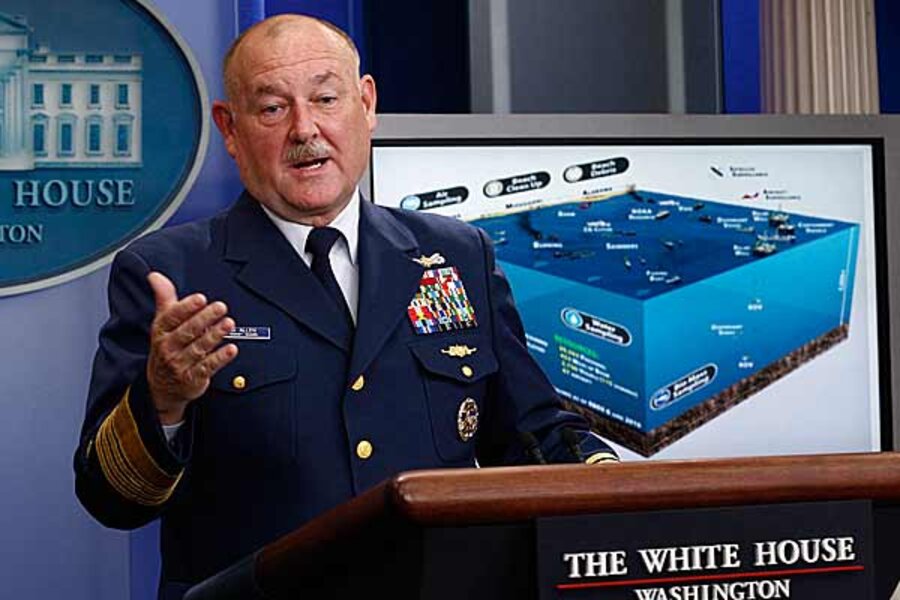As BP oil spill spreads, 1,500 fishing boats to aid relief
The BP oil spill in the Gulf of Mexico has now broken into thousands of minispills – patches of oil drifting in different directions across a vast area of ocean that stretches from Louisiana across to the Florida panhandle, and south as far as Tampa.
That means the fight to contain the spill has moved into a new phase in which the deployment of many small vessels with containment equipment has become much more important, said the Coast Guard commander in charge of the federal cleanup effort at a White House briefing on Monday.
“We’re adapting to an enemy that changes,” said Coast Guard Adm. Thad Allen. “The nature of this oil spill has changed from Day 1.”
IN PICTURES: Sticky mess: The Gulf oil spill's impact on nature
There are about 100 large ships now engaged in oil skimming and dispersant operations, Allen told reporters. Crucial to the next stage of operations will be what he termed “vessels of opportunity” – about 1,500 small fishing boats and other vessels from Gulf ports whose skippers have been given a measure of skimmer training.
These boats will work from the shoreline to 50 miles out at sea once they are outfitted with booms, barrels, hoses, or other sorts of skimming equipment.
“We are moving those assets into place right now,” said Allen.
The breakup of the oil spill has both good and bad aspects, according to Allen. On the positive side, it means that oil is unlikely to come ashore in massive quantities. On the negative side, it means that there are many more patches to track and attempt to control.
The breakup of the spill is the result of both human and natural activity, said Allen. Dispersants have broken off some of the patches; many others were caused by the vagaries of tide, currents, and time.
If nothing else, this change in the nature of the spill means it has morphed into a type of environmental adversary which the US has never seen and which the Coast Guard did not anticipate.
In 2002, for instance, the Coast Guard ran an exercise which tried to mimic the response necessary to the complete loss of a wellhead in the Gulf for a number of days. But the wellhead was assumed to be in much shallower water than the Macondo well now spewing oil at a fantastic rate, and the exercise did not foresee the breadth and complexity of the current spill.
“No one envisioned [a big spill] would get out this far and get this disaggregated,” said Allen.
Right now, it is not clear how much oil the cap on the Macondo well is capturing. Allen said it appears to be catching over 11,000 barrels a day. That should increase as BP brings in more equipment to handle the oil once it reaches the surface.
The final solution to the problem won’t occur until fall, warned the Coast Guard response commander, when relief wells are finished.
“That will effectively do what I call a ‘bottom kill’,” said Allen.
The federal clean-up response will continue for at least four to six weeks after the well is brought under control, he said.
IN PICTURES: Sticky mess: The Gulf oil spill's impact on nature
Related:





